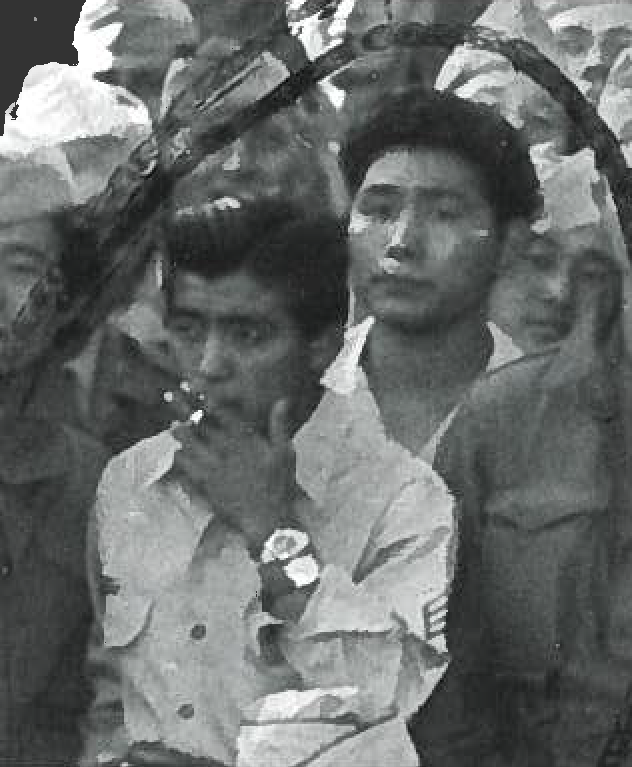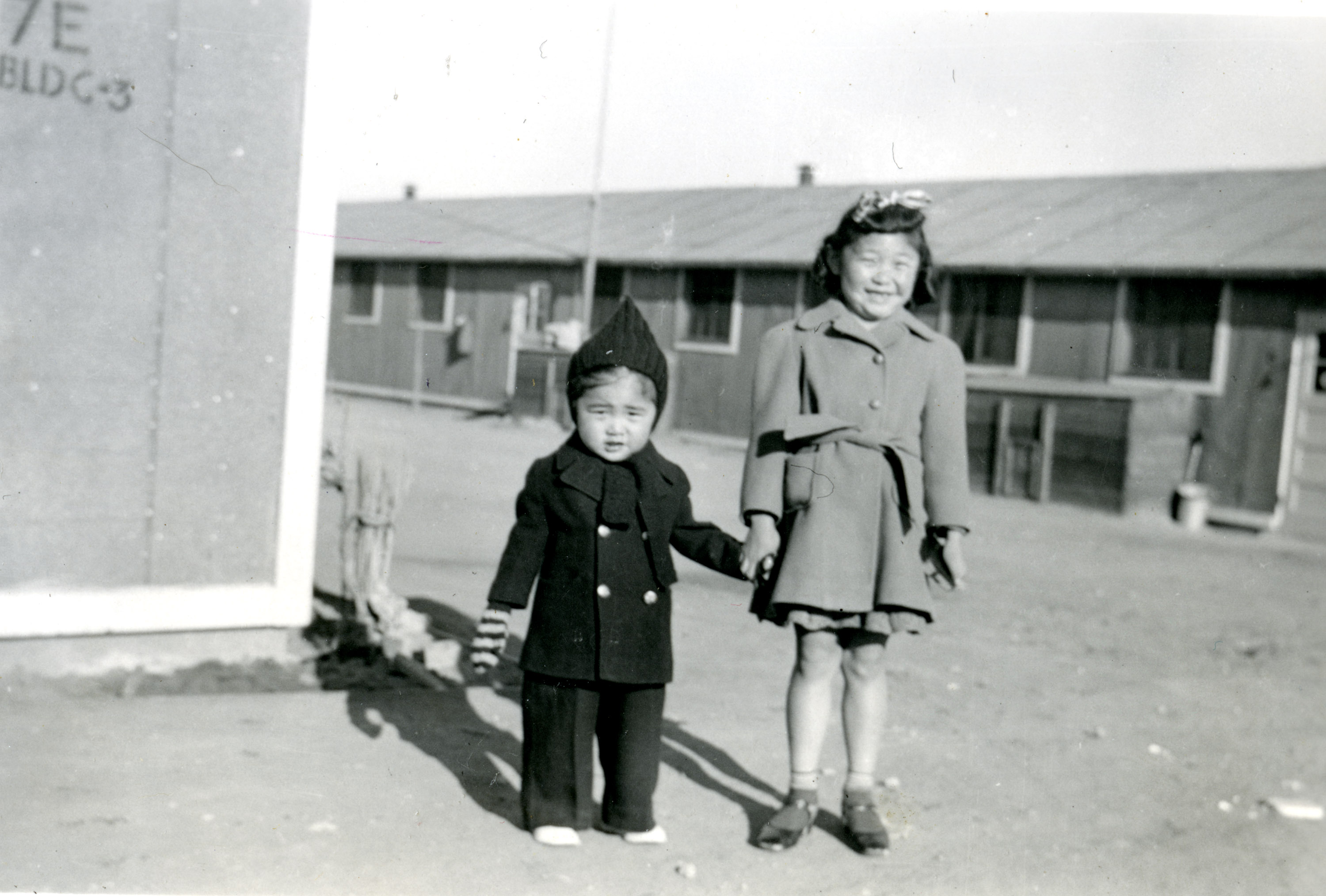
Story
Americans First: Colorado’s Japanese-American Community during World War II
An Interview
In 2004, Dick and Chizuko Momii shared the story of their lives as Japanese-Americans during the Second World War with Dr. William Wei.
To celebrate the 100th anniversary of The Colorado Magazine, we’ve selected some of our best articles from the last hundred years to republish online. This article was originally published in the Winter 2005 edition, and has been reproduced here as it was originally published. Some additional images have been added.
On July 27, 2004, the author interviewed Dick and Chizuko Momii. He followed up with additional questions.
Dick is a native Coloradan, born and raised in Brighton. He attended the University of Colorado for two years before volunteering for the United States Army, serving in the famous 442 Regimental Combat Team in Italy. After the war he returned to the University of Colorado, where he finished a degree in pharmacy and chemistry in 1948. Later, he graduated from the University of Colorado School of Medicine and served his internship at Fitzsimons Army Medical Center. Chizuko was born and raised in Los Angeles. She was twelve years old when she and her family were forcibly evacuated from the West Coast. They were processed at the Santa Anita Assembly Center in California and incarcerated at the Amache concentration camp near Granada, Colorado. Afterwards, her family chose to make their home in Colorado.
Following are edited excerpts.
What was it like to be a Japanese-American family in Colorado before the war?
Dick Momii: We lived in a small area called Wattenberg, where discrimination was not noticeable and the name-calling I recall was from the Hispanics when I boxed in the Elks tournament in Denver. The mayor of Brighton was very anti-Japanese, as was his daughter, who taught in the high school. On one occasion, she expressed her animosity for Japanese Americans, whereupon one of the valedictorian Japanese-American students promptly challenged her on her racism.
How about the Colorado Japanese-American community?
Dick Momii: My memories are limited because of my family’s extreme poverty. We were sharecroppers with limited access to travel, civic and cultural activities. We had no electricity, running water, radio, or daily newspaper.
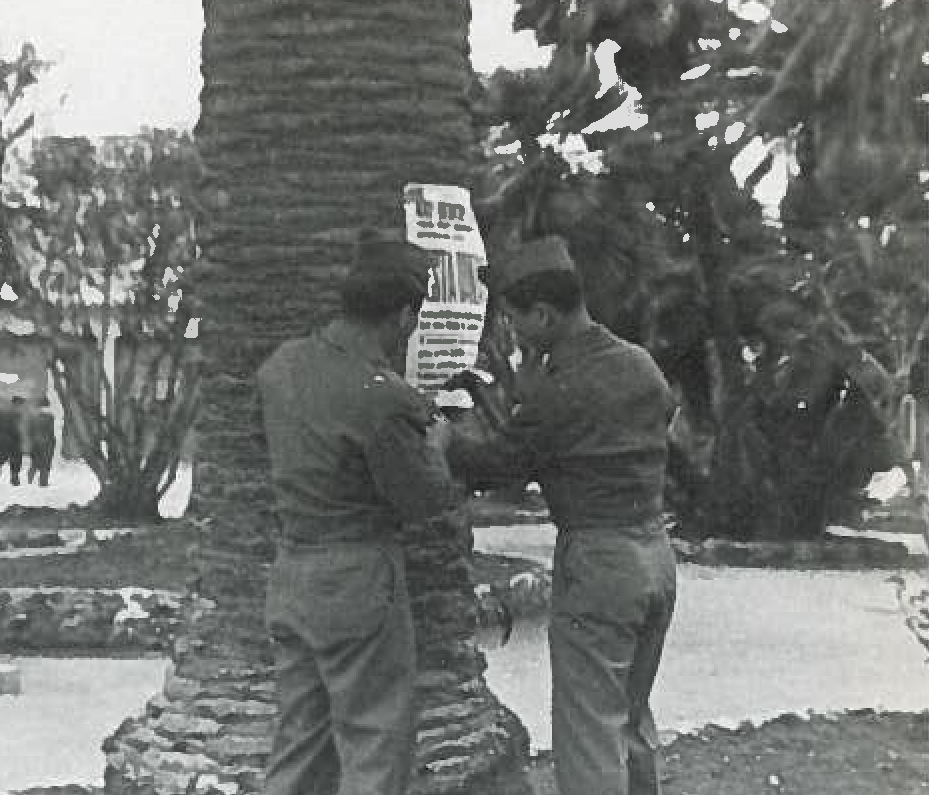
Momii and a fellow soldier post a flyer advertising a dance of the battalion’s “Go for Broke” social club. The club held dances in towns such as Livorno and Viareggio, where this photograph was taken. Momii was vice president of the club.
Before the war the rural Japanese community was not heavily concentrated. There were farms scattered in Greeley, Platteville, Ault, Kersey, Longmont, Fort Lupton, Littleton, the San Luis Valley, Rocky Ford, and Lafayette. I would venture a guess of perhaps (really a guess) 1,000 families owning, renting, leasing, or sharecropping. I don’t recall a large urban community in any cities except Denver, where there may have been as many as 500 or so because there was no large Japanese “town.” There were a few produce shipping companies, barbershops, restaurants, mercantile shops, grocery stores, and pool halls.
The Japanese-American community before the war struggled to fulfill the American dream of success through hard work and a desire for higher education. They did not engage in civil disobedience, respected the law, tried to maintain the cultural values of their heritage, and had unquestioned loyalty to the U.S. even if they were only the second generation experiencing some discrimination.
The main concerns, I believe, for the Colorado Japanese were education, succeeding economically, integrating, maintaining cultural values, and being good citizens to foster respect from fellow Americans.
How did the Japanese Americans get along with each other and with those outside the community?
Dick Momii: The members of the Japanese-American community had good relationships and there was little if any jealousy or animosity, and [we] were always willing to help each other if needed.
There were a few organizations like the Japanese American Association, which helped the younger Nisei, the Japanese Women’s Nisei Club, and the Japan Women’s Buddhist Club. I don’t recall any other men’s clubs. Since I was without a mother since age three, there was no women’s club participation from my family.
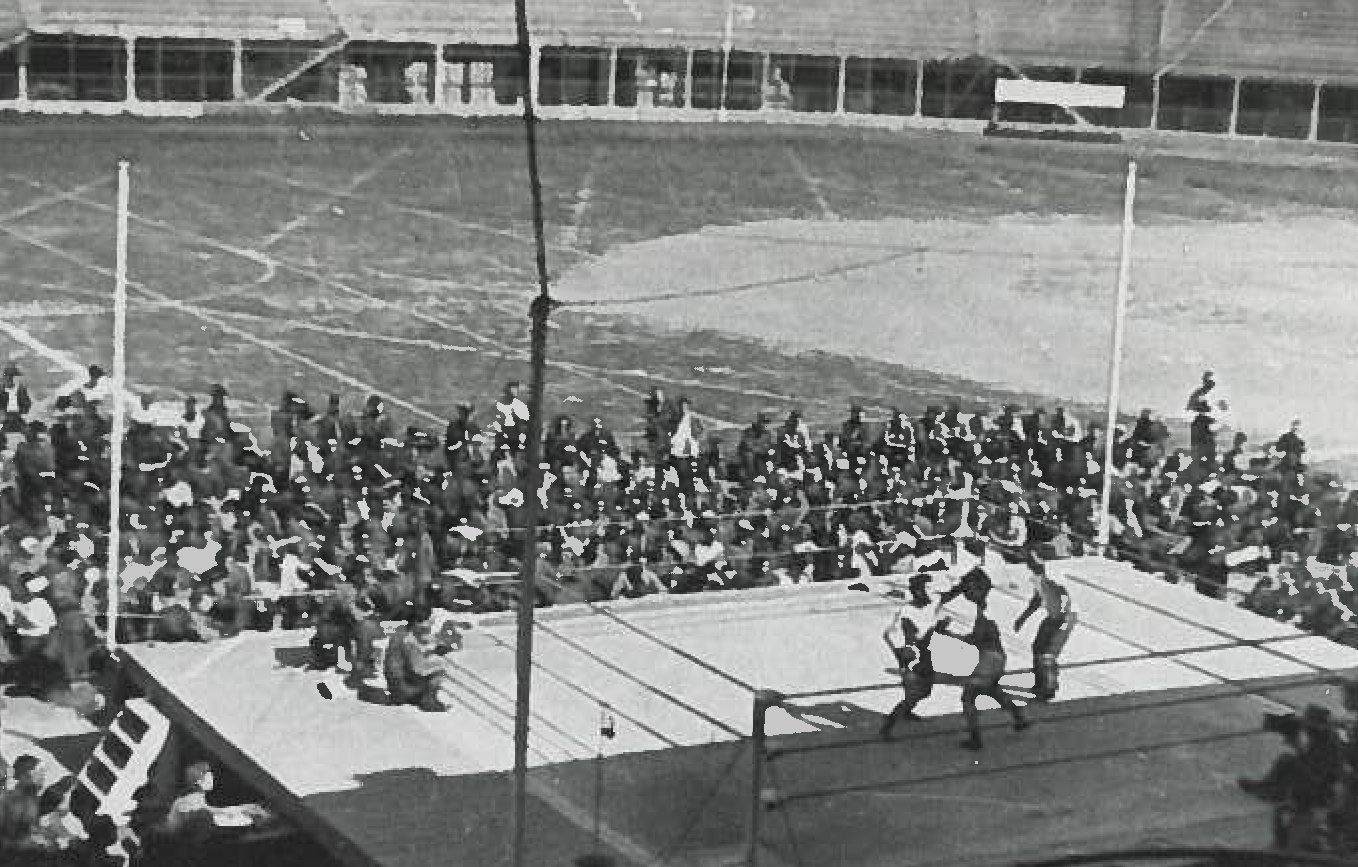
During the war Dick Momii fought on his regiment’s boxing team. The boxers competed for leave passes.
We got along well with most of the other nationalities, mainly German, Italian, and Hispanics. There were a few Italians and Hispanics who did not like the Japanese. (The Hispanics in Brighton were singled out to sit in certain sections of the movie theater.) My friend Rose Tanaka Tanabe recalls that in the small rural town of Brighton, the Italians were quite racist, but the German community was very tolerant of the Japanese Americans.
Did your family ever talk about Japan?
Dick Momii: My father rarely discussed life in Japan but he did try to instill in us his values, such as pride in our Japanese heritage, discipline, respect, honesty, and education. Personally, after Pearl Harbor, I felt betrayed by Japan and began to develop mixed feelings about the values of my cultural heritage, as little as I knew about them. I did sense that the local Nisei were very much loyal Americans, and probably felt as I did. I do remember that in July of 1941, my eldest brother volunteered for service. My father asked him if he knew that he probably would be fighting against Japan. My brother’s response was that he was an American first. My father never expressed any disappointment or ill feelings.
I know that you also joined the American armed forces. Where did you serve?
Dick Momii: Volunteered for service and was inducted at Fort Logan June 29, 1944. Went on active duty August 23, 1944, with basic training at Camp Blanding, Florida. Had further training at Fort Mead, Maryland, before embarking for Europe on March 18, 1945. Traveled to Marseilles, France, where I joined the 442nd, which had suffered severe casualties rescuing the “Lost Battalion.”* Went on an LST (a landing ship tank, built to carry troops and supplies) to Livorno, Italy. Went on line April 8, with the first enemy encounter at Priana, then on to Mount Pizzaculo, San Terenzo, Aulla, Alessandra, and finally to Asti. Processed POWs in Ghedi, then [was] stationed in Livorno, where I went on special services to the 100th Battalion and was VP of the “Go for Broke” Club. My first combat experience was under Captain Henry Oshiro and my non-coms were Kiyo Morimoto and George Matsumoto.
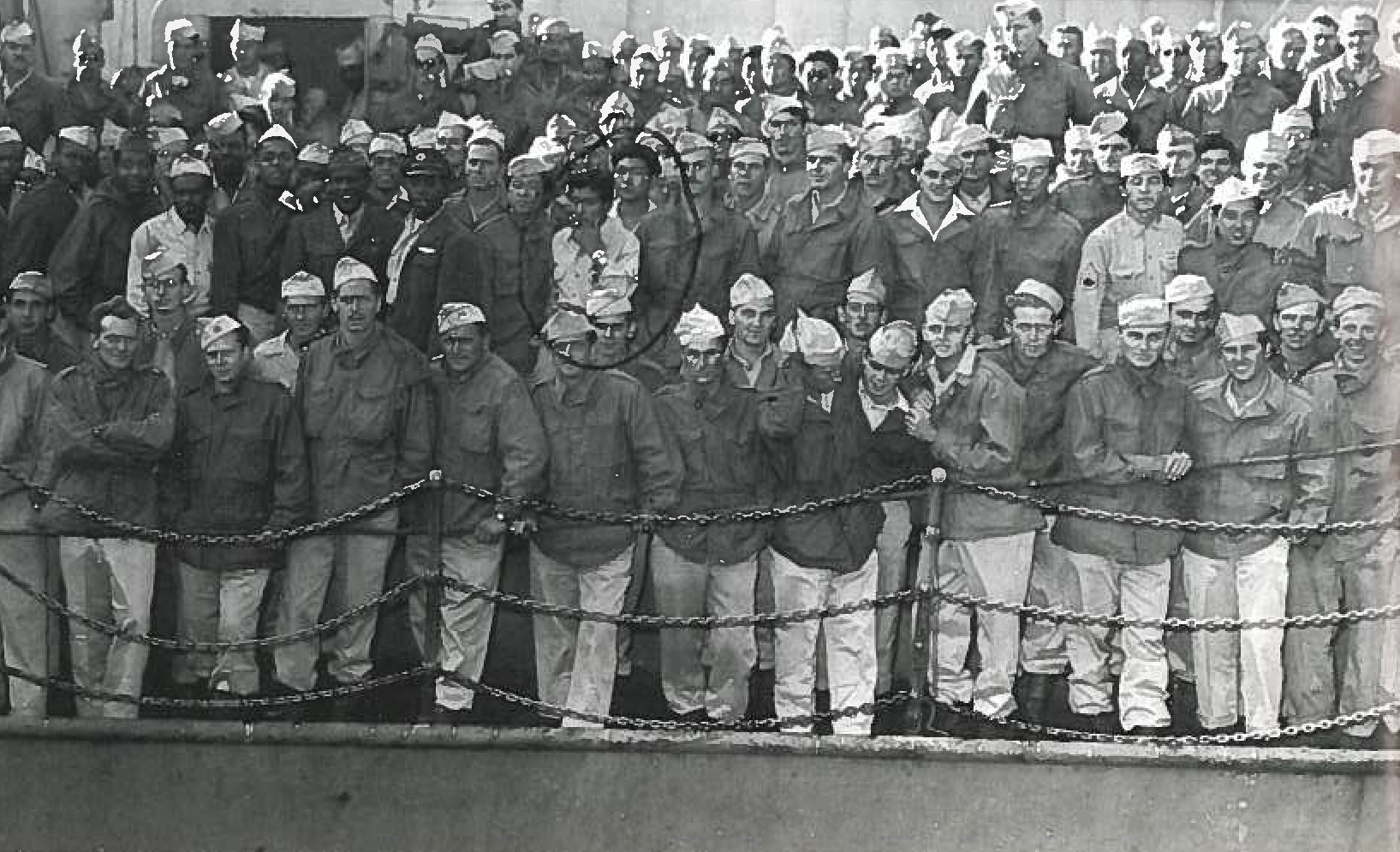
Returning from Italy after the war, Dick Momii (pictured with cigarette, and circled) arrives in New York Harbor aboard a troop ship.
Did the men of the 442nd ever talk about their families being in concentration camps?
Dick Momii: I believe by 1944, if there was any bitterness that the evacuee soldiers felt, it was replaced by the challenge of reinforcing the 442nd after the terrible losses they incurred in Bruyeres rescuing the “Lost Battalion” of the Texas 36th Division. We felt very much the challenge of continuing to prove ourselves as good Americans.
Speaking of the concentration camps, what was life like at Amache from the perspective of a twelve-year-old girl?
Chizuko Momii: Well, it wasn’t very exciting. We were thrown in with a lot of people with the same background, so in that sense our parents were comfortable with us socializing.
But the climate itself was just very hostile. Well, of course, we had the seasons, so in the winter, it was miserable. And windy. As a matter of fact, when we first started, there was a dress code, and with the first windstorm the girls’ legs were raw from the wind and the sand so the principal came in and made the announcement that we could wear pants to school. So that was real nice. So we wore pants except in the summer. In the spring we didn’t want to wear pants; we wore dresses. Most of the girls wore skirts.
As an adult, do you have any thoughts about being incarcerated at Amache?
Chizuko Momii: Well, of course, I thought it was wrong and I was really happy that the president signed the apology …. It was an experience. I mean being so young; it wasn’t as traumatic as it was for my parents. But then still it must have been suppressed because any time I saw a documentary on TV, it made me just sob. My auntie, who was sixteen at the time of the evacuation, said she was in Washington, D.C., and they had an exhibit of the camp and the barrack. She said that when she walked in she wasn’t aware that the exhibit was there. She said she started bawling, and she just couldn’t get over how emotional she got. But I can understand because just watching the evacuation taking place as a documentary really upset me. In fact, Dick won’t even let me watch it; he’d turn off the TV off because I would bawl. I would sob. So those feelings are suppressed.
What did your family do after leaving Amache?
Chizuko Momii: We came straight to Denver. My father came out first and went to Colorado Springs and worked as a cook at the Broadmoor hotel. And then he visited Denver and said, “This is the place.” He thought there was opportunity there for business. My father was an entrepreneur and decided that the seaweed business would be opportune as there were no seaweed products from the normal sources of Japan, Hawaii, and the West Coast. He instructed his maternal grandparents to experiment with the seaweed which came from the West Coast and, I believe, cooking them, laying them on wax paper with trowels, and drying them, cutting them in sheets, and packing them for sale principally to Hawaii. He had a small factory. It was named the Denver Seaweed Factory, located on Fifteenth and Blake Street in Denver.
What was interesting was there were no credit unions or credit sources available, so he got his capitalization through an organization called tanomoshi, wherein members contributed $100 to a pool and bid for the sum of money by offering interest rates and the highest bidder received the loan.
What was it like in Colorado after the war?
Dick Momii: Well, I was surprised by the first experience I had when we stopped in a small town. We had on our military uniforms and battle ribbons and we saw people and they said, “What are those Japs doing in here?” And, you know, we got out of there as quick as we could. That really shocked me, that kind of prejudice, even though there was publicity about Japanese Americans being so loyal to the country and being in one of the best units in the whole United States Army. When I got back to Denver, and was going to medical school, shortly after we got married, we wanted to get an apartment down there, 1951, near Denver General [Hospital]. And I wanted to rent an apartment and I said, “Well, if it makes any difference, I’m Japanese American.” and he said, “We don’t rent to Japs.”
Later, I remember, they were having block meetings for political caucuses, and they invited me to come to one of them. I said, “Does is make any difference that I’m Japanese American?” He said, well, “You’re an American.” And that was kind of a great boost for me, that people didn’t put that Japanese part before the American.

